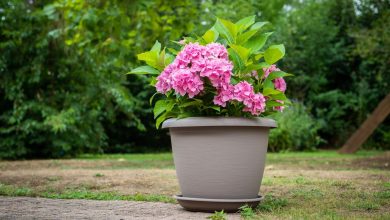How to Fertilize Peach Tree: [Components and Needs]
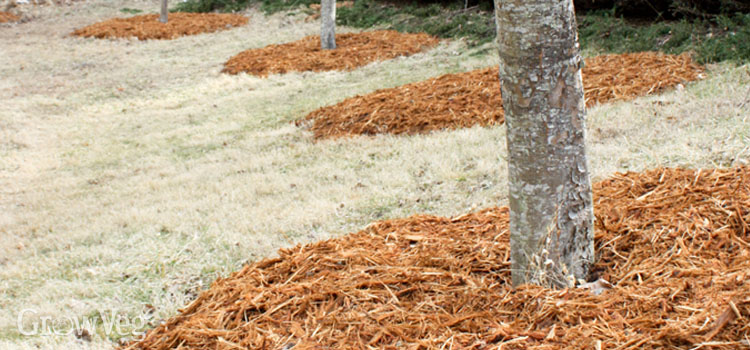
If you need to know how to fertilize a peach tree so that it is in perfect condition and gives you a lot of production, you have come to the right place.
Below we will see all the relevant data to know the nutrients that this fruit tree needs.
Maybe you are also interested in:
Why fertilize a peach tree?
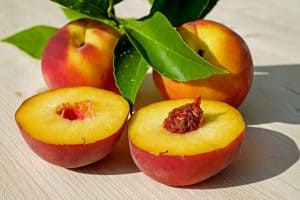 Being a fruit tree, it needs a lot of nutrients to be able to prosper.
Being a fruit tree, it needs a lot of nutrients to be able to prosper.
This is due to the normal energy expenditure that occurs, especially in the flowering and fruit formation stage.
But it is not enough to pay it in any way, it is necessary to work with the specific elements that help and enrich it.
What does the peach tree need?
For the peach tree to work efficiently, it needs the support of minerals such as potassium, nitrogen and phosphorus.
The amounts to apply this and other variants will start from what is achieved by studying the soil before sowing.
In any case, by using enough organic matter, the ideal conditions will already be obtained.
What are the main components of the fertilizer for the peach tree?
To get the peach fertilizer to work for good health, it is necessary that it has the following components.
Manure
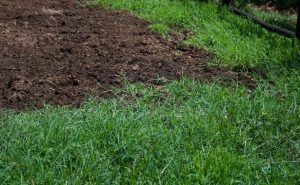 The manure will be the first step to nourish the soil before sowing, providing it with enough organic matter.
The manure will be the first step to nourish the soil before sowing, providing it with enough organic matter.
The amounts used will be defined according to the amount of land to work.
To maintain the tree in the future, it will also be necessary to have a little more ruminant manure.
Nitrogen
Nitrogen is one of the most important components to keep the peach tree in optimal conditions.
The amount placed will vary depending on the age of the tree.
Match
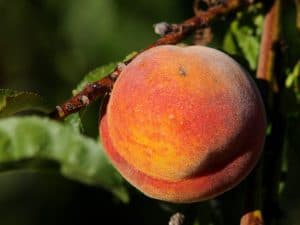 It will be another relevant nutrient that will be applied annually, on average during the winter in the first 3 months of the year.
It will be another relevant nutrient that will be applied annually, on average during the winter in the first 3 months of the year.
Magnesium
It will be a component that the peach tree will need in a very low quantity, a biannual application being sufficient.
Potassium nitrate and ammonium nitrate
They are the most relevant compounds to ensure that the peach tree remains healthy and firm.
They are practically applied throughout the year and the amounts will vary depending on the stage of the tree.
However, its use is essential from the winter until the peach harvests are made.
This is even when it comes to a late harvest.
What deficiencies can a peach tree have and how to detect them?
The main deficiencies that occur in the peach tree have to do with magnesium, zinc, manganese and calcium.
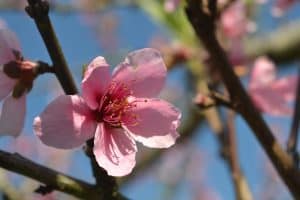 But there is also the lack of iron that tends to generate one of the most common diseases, known as iron chlorosis.
But there is also the lack of iron that tends to generate one of the most common diseases, known as iron chlorosis.
When this disease occurs, what happens is that the leaves of the peach tree look yellow in their structure.
To prevent it from appearing, it is important to keep the plant nourished and ensure that the soil has the correct pH.
Otherwise, the plant ‘s access to the soil’s nutrient sources will be blocked, affecting its good appearance.
How to make a fertilizer compound for peach trees step by step?
For a fertilizer to do a good job on a peach tree , it must be very rich in nutrients.
At home we can make a preparation without spending a single euro by applying the following instructions:
- Select a good-sized space to incorporate all the elements that will create the compost. If you have enough space in the garden, it can be a hole in the ground or a wide and deep container.
- Add as much organic matter as possible to the selected space: manure from non-domestic animals (chickens, cows, horses…), food scraps, dry leaves, etc.
- Keeping this mixture covered with a cloth is a good idea since it allows an appropriate temperature inside for bacteria to develop and fulfill their function.
- After the fertilizer has reached a deep brown color and has a more or less homogeneous consistency, it will be transferred to a container to carry out the final preparation that will be incorporated into the peach tree.
- A considerable amount of water will be added to this container, which will soften the mixture before placing it around the tree.
- After step 5 the fertilizer will be ready to fulfill its task.
In the event that the plant is in need of some special support in terms of chemical components, these can be purchased and incorporated into the mixture.
The next step will be to open a furrow around the perimeter of the tree and incorporate the mixture so that the soil absorbs it and fills it with nutrients.
It is important to define well the moment to carry out this action to avoid over-optimizing the tree.
The reason is that this could force it to generate new fruit shoots that do not correspond to it and end up affecting its general health.
Where to buy fertilizer for the peach tree?
It is best to go to a nursery or a specialized store in your area. However, if you don’t have access to either, we might recommend these products on Amazon:
 CULIVERS Special Fertilizer for Bonsai of 5 kg. Fertilizer of 100% Organic and Natural Origin, Granulated Slow Release and controlled with NPK 8-1-5 + 74% MO and Ac. Humic
CULIVERS Special Fertilizer for Bonsai of 5 kg. Fertilizer of 100% Organic and Natural Origin, Granulated Slow Release and controlled with NPK 8-1-5 + 74% MO and Ac. Humic
- Fertilizer in the form of slow and controlled release microgranules.
- Controlled growth of new internodes
- Ecological organic fertilizer with a high concentration of NPK.
- Organic fertilizer from high-quality plant material, obtained through controlled fermentation, for a…
€19.84 View on Amazon Prices with VAT without transport
Last updated on 2022-07-26 / Affiliate Links / Affiliate API Images
 Expert Advice Citrus Organico Organomineral fertilizer specific for citrus, 5 kg
Expert Advice Citrus Organico Organomineral fertilizer specific for citrus, 5 kg
- Npk 6-5-5 contains a high percentage of natural organic substances such as corknut, hops and neem panel.
- The neem panel is a substance of vegetable origin that restores the fertility of the exploited territories and favors…
- Distributed regularly throughout the year, it guarantees complete nutrition and optimal plant development.
- Fertilization period: from March to November; Frequency: every 30-40 days; How to use: shoot, lightly bury and…
View on Amazon Prices with VAT without transport
Last updated on 2022-07-26 / Affiliate Links / Affiliate API Images
 Suinga 500 KG ORGANIC FERTILIZER FERTILIZER Humus OF WORMS, Bags of 25 Kg – 41 liters. Suitable for organic farming
Suinga 500 KG ORGANIC FERTILIZER FERTILIZER Humus OF WORMS, Bags of 25 Kg – 41 liters. Suitable for organic farming
- Organic fertilizer suitable for Organic Farming obtained from earthworm droppings.
- They help the growth and development of all kinds of plants, improving the soil and caring for the environment.
- The earthworm humus is a product of organic origin that results from the transformation of animal manure carried out…
- It serves as a substrate for seedbeds (we recommend mixing with coconut fiber)
View on Amazon Prices with VAT without transport
Last updated on 2022-07-26 / Affiliate Links / Affiliate API Images
References and bibliography
- https://www.researchgate.net/profile/Jose_Alonso_Segura2/publication/280564497_Fertilizacion_mineral_en_melocotonero_tardio_para_una_produccion_sostenible_de_calidad/links/55bb269008aec0e5f43eaf75/Fertilizacion-mineral-en-melocotonero-tardio-para-una-produccion-sustainable.pdf-
- https://citarea.cita-aragon.es/citarea/handle/10532/1992
- http://repositorio.utn.edu.ec/handle/123456789/215
- https://core.ac.uk/download/pdf/159377456.pdf
- https://citarea.cita-aragon.es/citarea/handle/10532/3859




